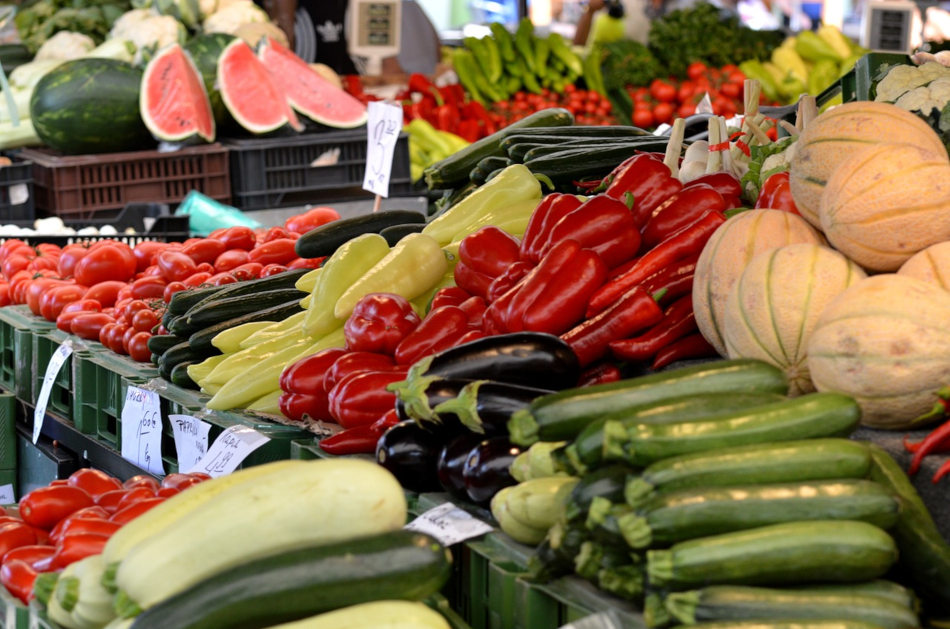It’s a fact — you lead a busy life. You want to live a greener lifestyle, but time and money get in the way. Do you ever find yourself making excuses? “I already have too much to do.” “I can’t afford expensive eco-friendly products.” “I don’t know where to start.”
Start here and now with this list. There are only 10 changes that will help you live a greener lifestyle, and they’re straightforward. They’re also economical. In fact, several will even save you money! Now that you have that extra incentive, it’s time to get going.
10 changes for leading a greener lifestyle
1: Farm it out
“Eat more fresh fruits and vegetables” is a common dietary recommendation, but they can be expensive! Shopping at a farmers market or buying directly from a local farm is an economical alternative. Plus, food doesn’t travel long distances, and it’s in season. That means less energy is needed for transportation.
And though more harmful emissions come from food production rather than shipment, small local farms are more likely to use sustainable practices, such as using fewer pesticides and enriching soil naturally.
2: Have second thoughts
Here’s another green shopping tip — buy second-hand when you can. Check out thrift stores, consignment shops, yard sales, and flea markets for clothing, toys, furniture, and other household items. You’ll help cut emissions and prevent waste.
Meanwhile, you’re saving money! Just make sure you buy an item because you need it, not just because it’s a great bargain.

3: Paper pusher
Disposable items are so convenient. Paper towels, plates, napkins, and cups are all handy — and wasteful. After just a single use, they end up in a landfill. Reusable versions don’t produce garbage when you wipe up a spill or finish a drink.
Are you worried about convenience? Don’t be. After all, how hard is it to toss a few cloth napkins into your regular load of laundry?
4: The high-water mark
Speaking of disposables — what about those plastic water bottles? You see them all around the country. How much of the US$11 million spent on them annually comes from you? If your answer is “too much,” try a reusable glass or stainless steel bottle. Fill it right from the tap, and you’re good to go — over, and over, and over again.
Be glad you’ve got that tap handy! If you want to go the extra mile and can afford it, consider investing in a rainwater harvesting tank. While the initial cost is high, you’ll save on your water bill in the long run with your reserve. Some uses for rainwater tanks include watering your lawn or garden or indoors for doing laundry.
5: Give and take
When you eat out, do you often bring leftovers home? It’s a great way to stretch your dollars — two meals for the price of one! But take-home disposable containers from restaurants are often not recyclable. So if you know leftovers are likely, bring your own reusable container.
6: Park and don’t ride
You’ll spend less at the pump — and release fewer emissions — if you cut down on car trips. Run multiple errands at once. If possible, park at one location, take care of business and walk to neighboring sites.
The overall best scenario — combine heath, economics, and environmentalism by leaving the car at home and walking or biking to your destinations.

7: Break the connection
Let’s move on to the home. You can cut energy usage and spend less, whether big or small, rented or owned. You’re living a greener lifestyle, and you’re saving some green. Begin by making sure energy isn’t being used when you’re not using appliances.
You’ve hit the button. Do you think the television is off? Think again.
TVs, DVD players, stereos, computers, coffee pots, and cell phone chargers continue to draw a little energy when not in use. That’s a waste, and it’s costing you as much as US$200 a year. Unplug these devices, or use a power strip you can flip off.
8: Light the way
Replace incandescent or compact fluorescent light bulbs with energy-saving LED bulbs. Though the initial cost of LEDs is a bit higher, they last longer — potentially, a lot longer. As a result, you’ll buy fewer bulbs and use far less energy.
9: Take turns
Use your thermostat to save money and energy all year round. In the winter, turn it down to at least 68 degrees. Put on a sweater if you have to. It’s winter, after all! And in warmer weather, don’t set the thermostat lower than 78. Instead, move it up or down a few more degrees when you’re not home.
Also, consider installing a relatively inexpensive programmable thermostat, and you won’t have to think about temperature control daily.
10: A clean sweep
Clean green! The cost of household cleansing products adds up, and many contain harmful substances. So instead, make your own eco-friendly cleaners. You’ll save money because the inexpensive ingredients have multiple uses. For instance, one all-purpose cleaner contains water, rubbing alcohol, and natural liquid dish soap.
There you have it — many ideas to help save both money and energy. They’re all pretty straightforward, so you can get started with your new greener lifestyle whenever you want. How about now?
Follow us on Twitter, Facebook, or Pinterest

